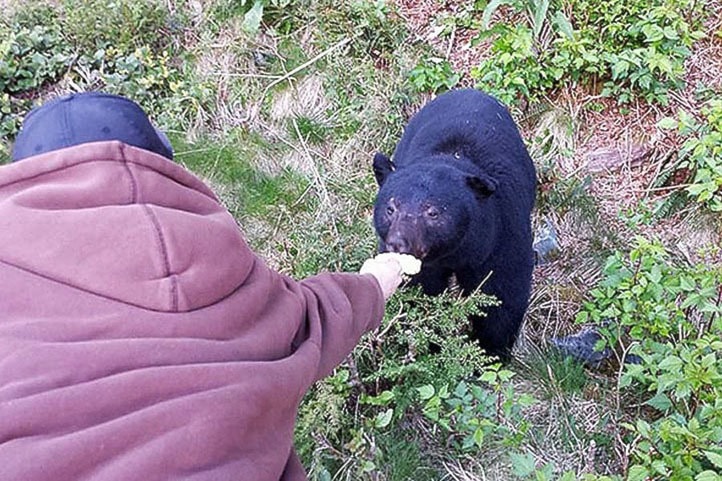Human-wildlife interactions are part of life in British Columbia, but all too often they end in disaster for the animals, and many—especially those involving bears—could be avoided if humans used a bit of common sense.
“It’s not rocket science, but we have to tell people over and over not to leave garbage and fruit lying around,” sighs Frank Ritcey, provincial WildSafeBC co-ordinator. “Unfortunately, a lot of people still haven’t got the message. Or they’ll say ‘I’ll take the garbage in, but I’ve never had anything happen.’
“However, by the time a bear has figured out that garbage is a high-calorie food source, they’re conditioned to it, and there’s very little opportunity for the Conservation Officer Service (COS) to do anything.”
WildSafeBC—which is designed, owned, and delivered by the B.C. Conservation Foundation—recently received $275,000 from the provincial government to provide education, and increase awareness, about human-wildlife conflicts, and reduce these potentially dangerous situations. Ritcey says that in this region, the organization works with Mandy Roth at the Thompson-Nicola Regional District.
“The program has been running for quite some time. She goes to schools, farmers’ markets, and other places to educate the public, and will respond to specific calls.”
WildSafeBC also works closely with the COS. “If they have issues that need addressing, we’ll address them.”
Bears getting into garbage are a big problem in this area, Ritcey says. “When an attractant is noted [in a bear encounter], garbage is involved more than 50 per cent of the time. If people would just look after that one thing, we’d have so much less conflict. People say ‘Just get rid of the bears’, but as long as there’s garbage there will be new bears to take their place.”
When it comes to feeding bears, the message is simple: don’t. Charges are pending in the case of two men who appeared in a video feeding rice cakes to a black bear near Tofino; just one of many cases where humans have been reported seen feeding bears, often along highways. This causes numerous problems, such as “bear jams” where people slow down to view the animals, and will sometimes try to interact with them.
“Some people have no idea,” says Ritcey. “They think it’s cute. However, a fed bear is a dead bear. Once it gets fed, it will try to get food from anyone who stops. The more we stop and interact with bears, the more habituated they become.
“It’s unfortunate that people blame the COS for having to destroy these animals. It’s not their fault. The fault is with people who feed bears. It’s the general public causing the problem.”
Rattlesnakes are another issue in this area, notes Ritcey. Last year two dogs were killed in the Kamloops area after being bitten by rattlesnakes, and one dog has already been bitten there this year (although the dog survived). “The big thing is keeping dogs on leash. Snakes will generally keep off trails, but a dog that goes off the trails and sees a snake and starts barking can cause the snake to bite in self-defence.”
If a person gets bitten by a rattlesnake, Ritcey says not to put a tourniquet or ice on the wound, and not to try to suck the venom out. The best course of action is to head to a hospital, having phoned ahead so they can have the anti-venom ready.
Deer are a problem in many communities, although Ritcey says that a family of deer moving through every week or so is not necessarily an issue. “Many people think it’s nice. However, it’s not so nice if 30 deer are camped out all the time. Deer can get aggressive when they get comfortable, and does are very protective of their fawns right now. Deer will attack people and dogs; there have been a number of dogs killed by them.”
He adds that people are not doing deer any favours by feeding them. “Other predators that feed on deer will follow them into town. And deer ticks are an issue as well.” One way to keep deer out is with fencing, although making them uncomfortable by yelling at them or shooing them along can also work. “It’s good to keep deer from becoming an issue.”
While WildSafeBC wants people to enjoy the wildlife we have here, Ritcey says it’s important to treat the animals with respect. Anyone who wants to get pictures of wildlife should take to back and side roads rather than causing a bear jam on a highway, and should stay 50 metres away from the animals. “Stay in your vehicle and use a long lens to minimize your interaction with animals.
“People have to accept responsibility. We live near nature. Keep wildlife wild and keep our communities safe. If we can keep animals where they belong, we’re all happy.”
